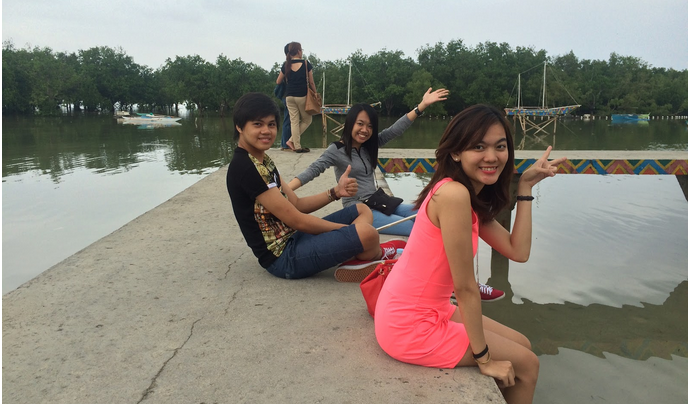
By Rica Fernandez
Who and what we are right now, is a result of the accumulation of what happened in our past. Like in relationships, travelling enables you to know about the bygones in order for you to have a deeper understanding and appreciation of what you have in the present.
This is the reason why I make it a point to at least catch a glimpse of history whenever I’m visiting a new and unfamiliar place. It is the best way to appreciate a culture on a deeper level and to see beyond what appears on the surface.
My friends and I decided to stop by three of Cebu’s most prominent heritage sites: the Yap-Sandiego Ancestral House, Museo Sugbo, and Lapu-Lapu Monument. Each had a distinct characteristic which represents the admirable Cebuano culture.
 The Yap-Sandiego Ancestral House, located in the Parian District is said to be one of the oldest Chinese-owned houses outside of China. The family’s forbearer married a Filipino citizen hence, the house’s current name. At first glance, the house looks like a simple traditional Filipino house made of wood with some religious displays outside. However, when you enter the ancient dwelling, you will see why it has been frequented by tourists throughout the years.
The Yap-Sandiego Ancestral House, located in the Parian District is said to be one of the oldest Chinese-owned houses outside of China. The family’s forbearer married a Filipino citizen hence, the house’s current name. At first glance, the house looks like a simple traditional Filipino house made of wood with some religious displays outside. However, when you enter the ancient dwelling, you will see why it has been frequented by tourists throughout the years.
There’s an assortment of olden, yet well-preserved pieces of furniture inside, as well as archaic paintings, ceramics and kitchenware placed in a way as if the abode is still inhabited.
One nice thing about this family-run museum is that guests are free to roam around and touch the collection of old artifacts and whatnots — as long as you handle them with care of course. They also assign personal guides to every batch of guests arriving, indeed living up to the mark of true Filipino hospitality.
Meanwhile, Museo Sugbo or the Cebu Provincial Museum, is a former detention centre in which now serves as home to some of the most significant cultural relics in the province: From old banknotes, postcards and letters, to the remnants of World War II including soldiers’ service packets and clothing, you can find them all here. My friends and I were simply amazed by the fact that we were surrounded by things that have long existed even before we were born!
 Lastly, there was the Lapu-lapu Monument in Mactan, which came as a surprise. We all knew we're going to see the statue of a native hero who fought the Spanish colonizers, but we didn't expect that it was in front of a small river — where there was a platform rising above the waters, allowing us to simply sit back, chill, and enjoy the surroundings.
Lastly, there was the Lapu-lapu Monument in Mactan, which came as a surprise. We all knew we're going to see the statue of a native hero who fought the Spanish colonizers, but we didn't expect that it was in front of a small river — where there was a platform rising above the waters, allowing us to simply sit back, chill, and enjoy the surroundings.
Of course, no one ever ends a tour without souvenir shopping! Since my friends and I are budget travellers, we made sure to scour for the best deals at the designated open-air shopping areas around the Lapu-lapu Monument.
There were all sorts of colourful things like key-chains, pouches, wallets, shirts, sandals, and refrigerator magnets, all locally made and ranging from as low as 10 pesos up to 200 pesos. You can surely score a discount especially if you are buying souvenirs in bulk. Just ask the seller politely and don't forget to say “daghang salamat”, which means “thank you” in Cebuano dialect!
If you want to have your own adventure in Cebu, there are various tours and activities available on BeMyGuest. Also, don't forget to check out other exciting things to do in the Philippines!
This is the third part of a blog series entitled “A Brief Love Affair with Cebu,” written by Rica Fernandez, a young professional from Manila who has a lot of dreams including travelling the whole world, and maybe, finding true love along the way.
Stay tuned to BeMyGuest Blog, Facebook, Twitter, and Instagram account for more updates regarding this blog series. Happy travelling!
